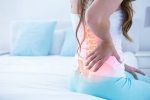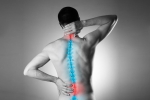Home » Blog
| Stem Cell, PRP, Acupuncture in Queens & Long Island, New York
Blog | Stem Cell, PRP, Acupuncture in Queens & Long Island, New York
We all wake up sometimes with a numb and tingly hand. But ongoing hand pain and numbness can be a disabling problem that requires diagnosis and treatment. Here are 3 of the main causes of hand pain and numbness—and tips for how you can tell them apart.
Carpal Tunnel Syndrome - When hand pain is experienced, it's common to first suspect carpal tunnel syndrome. This condition is caused by the narrowing of a bony passageway in your wrist, which irritates or compresses the median nerve that runs through it.
Read more
People who received intradiscal platelet-rich plasma (PRP) injections to treat low back pain found a significant improvement in both pain and function, according to a study led by Dr. Gregory Lutz, Medical Director of the Regenerative SportsCare Institute, and Physiatrist-in-Chief Emeritus, Hospital for Special Surgery. Dr. Lutz followed 49 patients for two years and presented his results at the Interventional Orthopedics Foundation’s Annual Conference.
Read more
Sit Hunched - It goes against the natural alignment of your spine. Slumping forward also puts more pressure on your lower back. Gently stretch and move your head and neck up and down and to the right and left every half-hour. To ease any pain or spasm, apply an ice pack or heating pad to the area. Be sure to cover the skin with a light towel or cloth first. See your doctor if the pain won't go away.
Read more
Whether it's a herniated disc, spinal stenosis, or strained muscles, it can take some time to diagnose and treat the causes of back pain. And all the while, you're trying to navigate health insurance, work and family life, and everyday stressors—all while dealing with your back pain. This blog is written to highlight a few fairly simple things you can do to help achieve some level of comfort and pain relief. Here we have some simple tips to help keep your spine as healthy as possible:...
Read more
100 million adults in the United States - The majority of chronic pain in the United States is the result of a musculoskeletal injury stemming from trauma, disease, or illness. It is estimated that more than 100 million adults in the United States deal with some form of back pain throughout the year. And for many of these individuals, their back pain gradually goes from being acute to chronic.
Read more
Start the Day with Gentle Activity - Slow, gentle activity in the morning can help wake up tired muscles and stiff joints. Just take it easy on your spine, says Raj Rao, MD, professor of Orthopedic Surgery and Neurosurgery at the Medical College of Wisconsin. Deep, relaxed breathing when you wake up may also be helpful. But certain moves aren't recommended if you have back pain -- ask your health care provider what's best for you.
Read more
It seems you can't watch the evening news or pass by a strip mall without someone trying to sell you a mattress. The seemingly limitless options for choosing a mattress can be overwhelming. This is even truer if you experience back or neck pain—choosing the right or wrong mattress can make the difference between spending the day feeling good or in pain. These 12 tips can't guarantee you will end up with the perfect mattress (since everyone's mattress needs are different), but they can help you make an educated choice.
Read more
Chronic pain is like a thief that can deprive your life of its joy. It can leave you with a terrible sense of hopelessness. Chronic pain sufferers find themselves receding into a routine that is dominated by a constant struggle to focus on life in spite of the pain. Everything else falls to the wayside. The things that they love to do, the things that give their life joy and meaning, become impossible. Depression quickly sets in, and a person who is battling chronic pain can lose hope that their life will ever return to what it was before. If you are currently battling chronic pain, we empathize with what you are going through.
Read more
Who's at Risk for Low Back Pain? - Most people experience back pain first when they're in their 30s. The odds of additional attacks increase with age. Other reasons your low back may hurt include: Being overweight, Being sedentary, Lifting heavy stuff on the job, Diagnosing Low Back Pain. To help your doctor diagnose the source of low back pain, be specific in describing the type of pain, when it started, related symptoms, and any history of chronic conditions. Your doctor will probably not need to order X-rays, CT or MRI scans before starting treatment.
Read more
When you are experiencing low back pain, your first instinct may be to crawl into bed. Until a few decades ago, your doctor probably would have told you to do exactly that. But the tide has turned on our understanding of what is best for tackling back pain, and now the consensus is this: When you have back pain, you should limit or avoid bed rest.
Read more
Love this Post? Spread the World






















